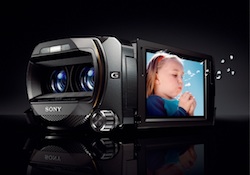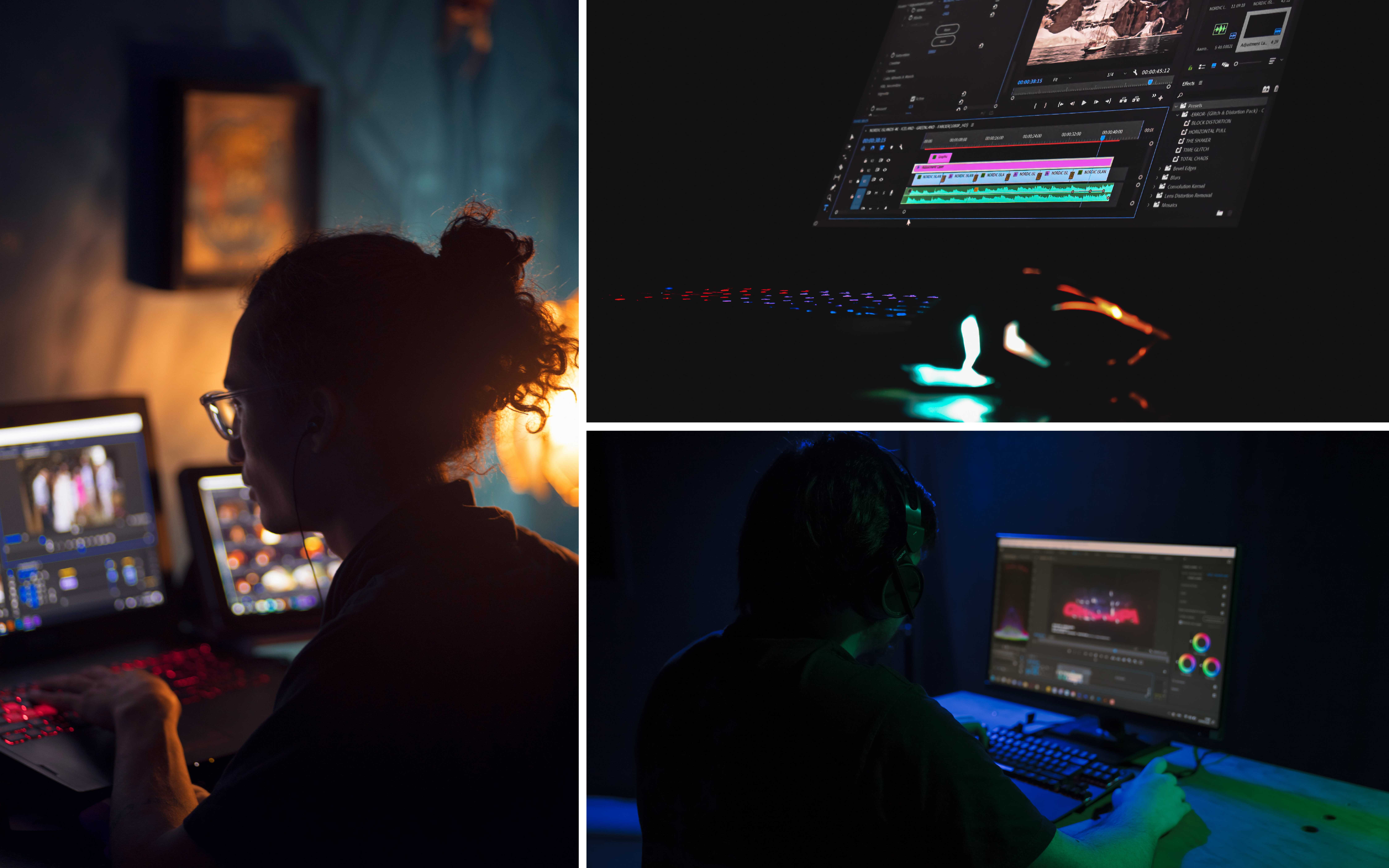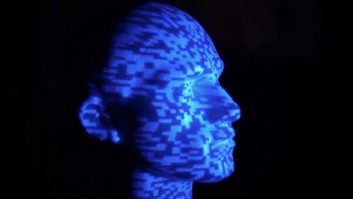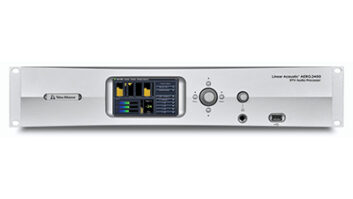
3D was probably the key theme at the Consumer Electronics Show in Las Vegas (even more so than would be iPad rivals), with 3D displays, 3D games consoles, 3D-equipped laptops, and cheap and simple consumer cameras on many stands – several of which could find themselves used for professional applications.
Sony’s first foray into the world of consumer 3D camcorders includes one that may be of interest to professional users.
The HDR-TD10E was claimed to be “the world’s first Double Full HD 3D consumer camcorder” – JVC made similar claims (see below). It uses an integrated dual lens system with two Sony G Lenses, two Exmor R CMOS sensors, and two BIONZ image processors, recording 1920×1080 on both channels. It can also output full HD 2D video, and recordings can be played back in 3D without glasses on the camcorder’s 3.5-inch autostereoscopic LCD touch screen.
Other features include: 10x optical zoom with Optical SteadyShot (Active Mode) and iAUTO in 3D mode; 64GB of built-in flash memory.
The HDR-TD10E will be available in April for about $1,499.
Sony also has one of the simplest and cheapest 3D camcorders on offer in its new Bloggie HD range.
The Bloggie 3D records 1920×1080 MP4 video and 5-megapixel still photos. It has two lenses (very close together), two image sensors, stereo microphone and built-in LED light. Recordings can be viewed in 3D without glasses on the camera’s 2.4-inch LCD or via a 3D screen using HDMI. It has 8GB of internal memory and will be available in April for less than $250.
JVC goes full on
JVC’s GS-TD1 full HD 3D consumer camcorder can also record 1920×1080 (50i or 60i) on both left and right channels simultaneously (as well as supporting side-by-side format AVCHD 3D plus AVCHD 2D).
It features two 3D HD GT 5x lenses (10x in 2D mode), two 3.32 megapixel CMOS sensors, 64GB of built-in flash memory plus an SD card slot, the new Falconbrid LSI chip (see our other CES camera round up for full details), and a 3.5-inch glasses-free 3D touch panel LCD. It should cost less than $2,000 and ship in March – which might indeed mean it lives up to JVC’s claim that “the newly developed LR Independent Format makes the GS-TD1 the world’s first consumer-oriented camcorder capable of 3D shooting in Full HD.”
It has an Optical Axis Automatic Stabilization System for disparity control to give depth to 3D images, Biphonic technology for dynamic 3D sound, and Automatic Parallax Adjustment to optimize the 3D-video comfort zone. The f1.2 lenses have round iris diaphragms to give a pleasing bokeh effect (background blurring) for both video and stills alike – although the small, back-illuminated CMOS sensors may not always give the shallow depth of field needed to make that useful. It will be able to do 3D time-lapse recording, which may make it very useful as a set and forget camcorder for long-term projects. It also records 3D still images.
JVC’s also showed a new HD Everio camcorder with 3D capabilities. The $950 GZ-HM960 has 2D-to-3D conversion built in, to turn any 2D footage into 3D. Output can be viewed without glasses on the camera’s 3.5-inch 3D LCD monitor, or by connecting the camcorder to a 3D TV. It will be available in February.
GoPro sports 3D
One of the most interesting developments is a small, waterproof 3D rig for shooting full 1080p 3D video with the tiny GoPro Hero HD cameras. These are already widely used for TV production to get shots in wet, dusty or difficult conditions (such as fixed to a ski helmet).
The upcoming 3D Hero Expansion Kit will allow users to fit two of the 1080p cameras in the one housing, with a synchronization cable that connects the camera’s bus outputs (it says that this synchronises “video capture and settings”, hopefully including the auto exposure). The kit should cost less than $100, and each HD Hero costs $260 (although many production companies and cameramen will already have one or two of them).
The interaxial distance between the lenses can be adjusted, by simply turning one of the cameras upside down (going from about 60mm apart to about 30mm) – although rolling shutter effects with verticals skewing in opposite directions may make this unusable for some shots. The normal GoPro housing is waterproof to 60m, so presumably the 3D rig will be too. The whole rig should weigh less than 400g, including cameras. The kit should be available soon, and will probably lead to lots of 3D base-jumping, skydiving, snowboarding and climbing videos on YouTube.
GoPro also supplies 3D conversion software to import video from one camera and have the other camera’s video automatically imported and aligned to create a 3D file.
Consumer 3D camcorders
Panasonic’s new TM900 (pictured) and HS900 1080/50p camcorders have three CMOS sensors, record AVCHD at 28Mbps, have 3.5-inch touch screens, a manual control ring, 20x f1.5 zoom lens, and can record 3D with the addition of a 3D conversion lens.
It has also launched even cheaper, single sensor 1080/50p camcorders, the TM90 and SD90, with 28mm 21x zoon lenses that can also be converted to 3D.
ViewSonic’s ViewFun 3D camcorders were some of the least expensive on show, with one of its models, the Palm 3D HD able to record full HD 1080p in 3D or 2D at 60fps (at 18Mbps – there is no word on whether there will be a 50p version). It has a 3.2-inch LCD screen using parallax technology to display 3D without the need for glasses. Cost is about $250, with instant sharing to YouTube 3D and Facebook,
It also showed some even less expensive 3D models using the side-by-side format, from $150 to $200. Prepare for the onslaught….
www.sonybiz.net
www.jvcpro.eu
www.gopro.com
www.panasonic-broadcast.com
www.viewsonic.com






